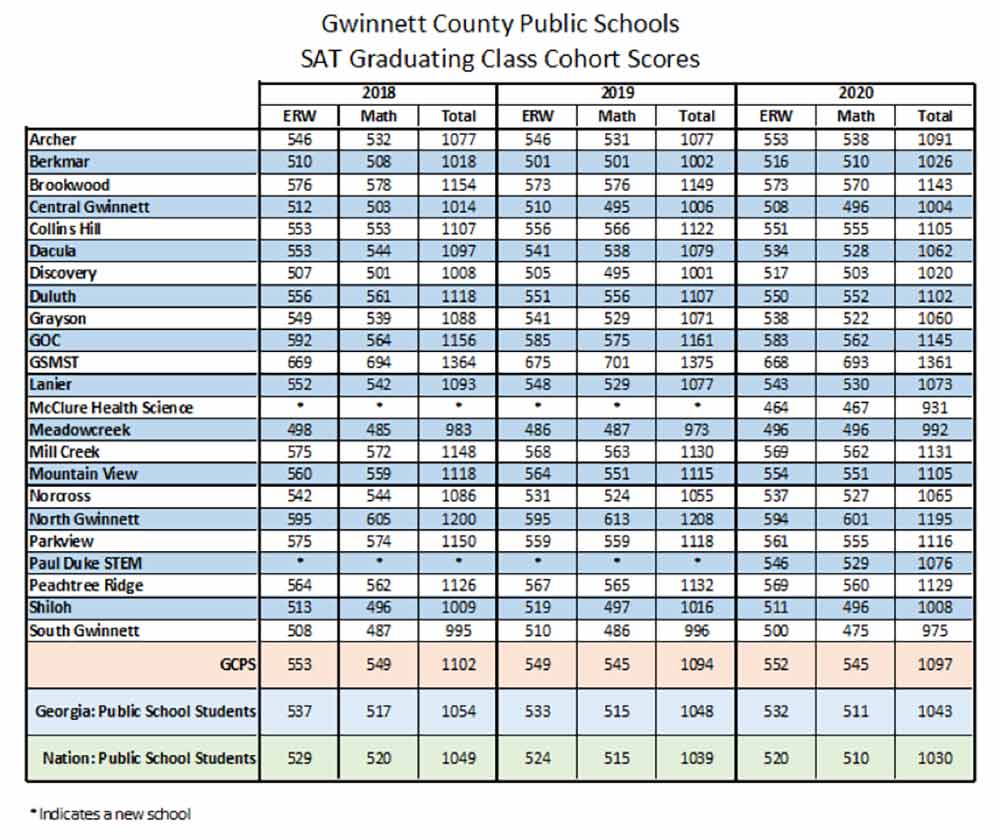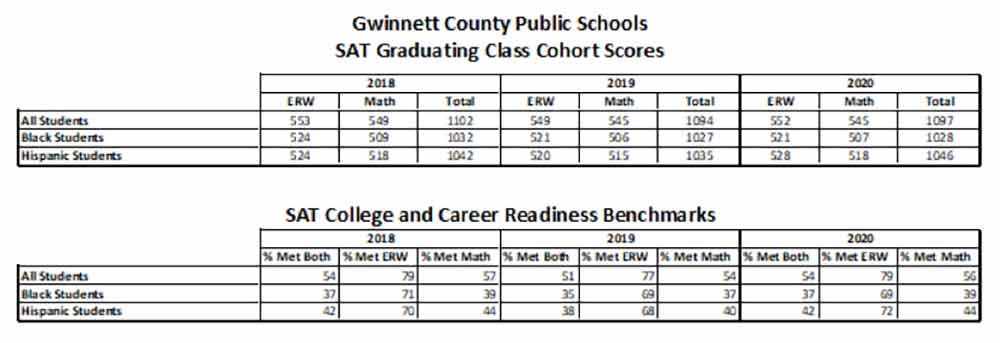
Gwinnett’s average on the SAT topped state and national averages on both sections (Evidenced-Based Reading and Writing and Math) of the test. Gwinnett’s average score of 1097 was 67 points higher than the national average and 54 points higher than the state’s score of 1043. The district’s average on the SAT did increase slightly; however, there were decreases at the state and national levels.
Gwinnett SAT Highlights
• Gwinnett’s average composite score on the SAT is 1097, a combination of the average Evidenced-Based Reading and Writing score of 552 and the average Mathematics score of 545. (Possible scores range from 200 to 800 on each section. The highest possible composite score is 1600.)
• Gwinnett’s total SAT average is 67 points above the national average of 1030.
• Gwinnett’s average is 54 points above the Georgia average of 1043.
• In Gwinnett, 8,166 students participated in this past year’s test, a decrease from the 8,977 students in the Class of 2019. The decrease in participation is understandable given the COVID-19 pandemic.
• The SAT scores for six GCPS high schools— Archer, Berkmar, Discovery, Meadowcreek, Mill Creek, and Norcross — increased.
Equity and Student Group Performance
Gwinnett’s 2020 scores also bring positive news in the area of equity. The GCPS Class of 2020 College and Career Readiness Benchmark scores increased from the Class of 2019. Fifty-four percent of students in the Class of 2020, who took the SAT, met both the math and ERW benchmark, up from 51%. While 79% met the ERW benchmark, up from 77%. Those meeting the math benchmark increased to 56%, up from 54% for the Class of 2019.
Black students in Gwinnett’s Class of 2020 earned a mean composite score of 1028, up from 1027 for the Class of 2019. Hispanic students in the GCPS Class of 2020 have a mean composite score of 1046, an increase of 11 points from the Class of 2019 mean composite score of 1035.
Black and Hispanic students improved their College and Career Readiness Benchmark scores as well, with 37% of black students meeting both benchmarks in ERW and Math, up from 35% in the Class of 2019. The ERW benchmark remained stable at 69%, while the math benchmark scores increased to 39% up from 37%. For Hispanic students, the percentage of students meeting both benchmarks increased from 38% in 2019 to 42% in 2020. The Hispanic student group increased the percentage meeting the ERW to 72%, up from 68%; while the percentage meeting the math benchmark increased from 40% to 44%.


